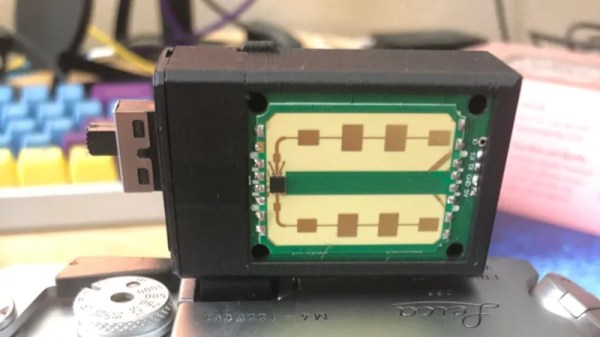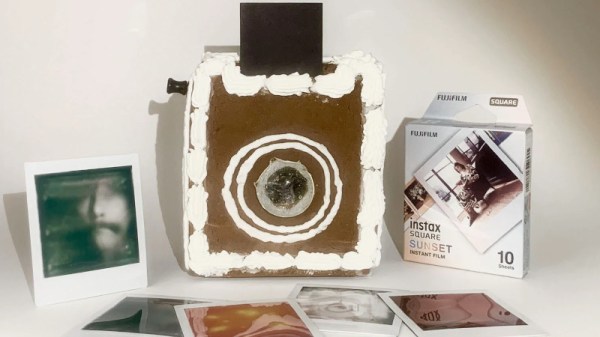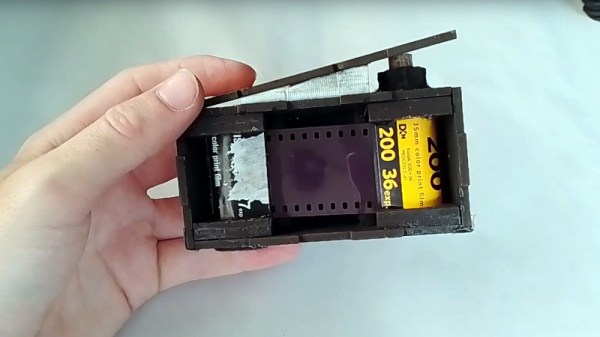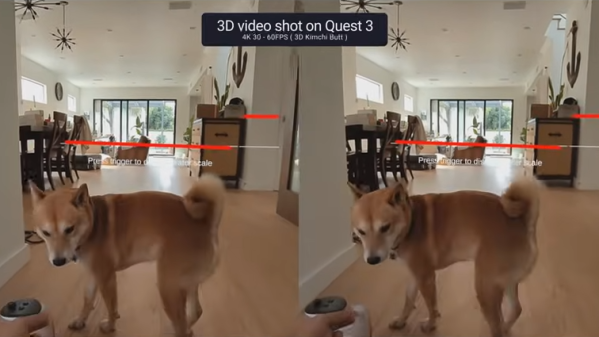When all else fails, blame it on the cloud? It seems like that’s the script for just about every outage that makes the news lately, like the Wyze camera outage this week that kept people from seeing feeds from their cameras for several hours. The outage went so far that some users’ cameras weren’t even showing up in the Wyze app, and there were even reports that some people were seeing thumbnails for cameras they don’t own. That’s troubling, of course, and Wyze seems to have taken action on that quickly by disabling a tab on the app that would potentially have let people tap into camera feeds they had no business seeing. Still, it looks like curiosity got the better of some users, with 1,500 tapping through when notified of motion events and seeing other people walking around inside unknown houses. The problem was resolved quickly, with blame laid on an “AWS partner” even though there were no known AWS issues at the time of the outage. We’ve said it before and we’ll say it again: security cameras, especially mission-critical ones, have no business being connected with anything but Ethernet or coax, and exposing them to the cloud is a really, really bad idea.
camera578 Articles
All-Sky Camera Checks For Aurora
The aurora borealis (and its southern equivalent, the aurora australis) is a fleeting and somewhat rare phenomenon that produces vivid curtains of color in the sky at extreme latitudes. It’s a common tourist activity to travel to areas where the aurora is more prevalent in order to catch a glimpse of it. The best opportunities are in the winter though, and since most people don’t want to spend hours outside on a cold night night in high latitudes, an all-sky camera like this one from [Frank] can help notify its users when an aurora is happening.
Because of the extreme temperatures involved, this is a little more involved than simply pointing a camera at the sky and hoping for the best. The enclosure and all electronics need to be able to withstand -50°C and operate at at least -30. For the enclosure, [Frank] is going with PVC tubing with a clear dome glued into a top fits to the end of the pipe, providing a water-resistant enclosure. A Raspberry Pi with a wide-angle lens camera sits on a 3D printed carriage so it can easily slide inside. The electronics use power-over-ethernet (PoE) rather than a battery due to the temperature extremes, which conveniently provides networking capabilities for viewing the images.
This is only part one of this build — in part two [Frank] is planning to build a system which can use this camera assembly to detect the aurora automatically and send out notifications when it sees it. Watching the night sky from the comfort of a warm house or sauna isn’t the only reason for putting an all-sky camera to use, either. They can also be used to observe meteors as they fall and then triangulate the position of the meteorites on the ground.
Street Photography, With RADAR!
As the art of film photography has gained once more in popularity, some of the accessories from a previous age have been reinvented, as is the case with [tdsepsilon]’s radar rangefinder. Photographers who specialized in up-close-and-personal street photography in the mid-20th century faced the problem of how to focus their cameras. The first single-lens reflex cameras (SLRs) were rare and expensive beasts, so for most this meant a mechanical rangefinder either clipped to the accessory shoe, or if you were lucky, built into the camera.
The modern equivalent uses an inexpensive 24 GHz radar module coupled to an ESP32 board with an OLED display, and fits in a rather neat 3D printed enclosure that sits again in the accessory shoe. It has a 3 meter range perfect for the street photographer, and the distance can easily be read out and dialed in on the lens barrel.
Whenever the revival of film photography is discussed, it’s inevitable that someone will ask why, and point to the futility of using silver halides in a digital age. It’s projects like this one which answer that question, with second-hand SLRs being cheap and plentiful you might ask why use a manual rangefinder over one of them, but the answer lies in the fun of using one to get the perfect shot. Try it, you’ll enjoy it!
Some of us have been known to dabble in film photography, too.
Thanks [Joyce] for the tip.
Honey, I Ate The Camera
We like cameras here at Hackaday. We like them a lot. But until now that liking has never extended to liking their taste. A build from [Dmitri Tcherbadji] could change all that though, and he’s created a working Fuji Instax Square camera made from gingerbread.
To look at, it’s a straightforward box camera, albeit one made from sheets of gingerbread stuck together with what looks like icing. The film rests in an off-the-shelf development unit but the rest is edible, including unexpectedly the lens which is made of sugar glass. The photos it returns are definitely somewhat cloudy, but that it works at all is a significant feat.
While it’s an unconventional choice it’s clear that gingerbread, or at least a baked material similar to it, could become a useful tool in a maker’s arsenal. In this case it’s light-proof, but were instantly curious about how well a moulded piece of dough might hold its shape when baked. He reports the gingerbread expanding in the oven, however we’re guessing that tuning the quantity of raising agent could help.
Home-made cameras have featured here many times, but Instax seems to pop up most often as a hacked in replacement for obsolete Polaroid packs.
The Minimum Required For A Film Camera
Film cameras can be complex and exquisitely-crafted masterpieces of analogue technology. But at their very simplest they need be little more than a light-proof box with a piece of film at the back of it, and some kind of lens or pinhole with a shutter. [ChickenCrimpy] adds the most basic of 35 mm cartridge to create what he calls the Minimum Viable Camera. It’s a half-frame 35 mm pinhole film camera with the simplest possible construction.
 It can be built from almost any flat light-proof 3 mm thick stock, though something that you can run through a laser cutter is probably ideal. Once snapped together to make to box-like structure, tape is added along the joins for light-proofing. The film is reeled from a full 35 mm cartridge to an empty one, and cranked back frame-by-frame by means of a wooden key that engages with the spindle.
It can be built from almost any flat light-proof 3 mm thick stock, though something that you can run through a laser cutter is probably ideal. Once snapped together to make to box-like structure, tape is added along the joins for light-proofing. The film is reeled from a full 35 mm cartridge to an empty one, and cranked back frame-by-frame by means of a wooden key that engages with the spindle.
There’s no lens, instead this is a pinhole camera, and the shutter is a piece of the stock held on the front of the camera with bolts and butterfly nuts. Taking a photo is as simple as pointing the device at the subject and lifting the shutter away for a few seconds. There’s a video overview for the project which we’ve placed below the break.
It’s true that this camera needs a moment in the darkroom to load, but we like its extreme simplicity and the ethereal and grainy pictures it produces. If you fancy an introduction to 35 mm photography you could definitely do worse.
Retrotechtacular: Studio Camera Operation, The BBC Way
If you ever thought that being a television camera operator was a simple job, this BBC training film on studio camera operations will quickly disabuse you of that notion.
The first thing that strikes you upon watching this 1982 gem is just how physical a job it is to stand behind a studio camera. Part of the physicality came from the sheer size of the gear being used. Not only were cameras of that vintage still largely tube-based and therefore huge — the EMI-2001 shown has four plumbicon image tubes along with tube amplifiers and weighed in at over 100 kg — but the pedestal upon which it sat was a beast as well. All told, a camera rig like that could come in at over 300 kg, and dragging something like that around a studio floor all day under hot lights had to be hard. It was a full-body workout, too; one needed a lot of upper-body strength to move the camera up and down against the hydropneumatic pedestal cylinder, and every day was leg day when you had to overcome all that inertia and get the camera moving to your next mark.
Operating a beast like this was not just about the bull work, though. There was a lot of fine motor control needed too, especially with focus pulling. The video goes into a lot of detail on maintaining a smooth focus while zooming or dollying, and shows just how bad it can look when the operator is inexperienced or not paying attention. Luckily, our hero Allan is killing it, and the results will look familiar to anyone who’s ever seen any BBC from the era, from Dr. Who to I, Claudius. Shows like these all had a distinctive “Beeb-ish” look to them, due in large part to the training their camera operators received with productions like this.
There’s a lot on offer here aside from the mechanical skills of camera operation, of course. Framing and composing shots are emphasized, as are the tricks to making it all look smooth and professional. There are a lot of technical details buried in the video too, particularly about the pedestal and how it works. There are also two follow-up training videos, one that focuses on the camera skills needed to shoot an interview program, and one that adds in the complications that arise when the on-air talent is actually moving. Watch all three and you’ll be well on your way to running a camera for the BBC — at least in 1982.
Continue reading “Retrotechtacular: Studio Camera Operation, The BBC Way”
Quest 3 VR Headset Can Capture 3D Video (Some Tampering Required)
The Quest 3 VR headset is an impressive piece of hardware. It is also not open; not in the way most of us understand the word. One consequence of this is the inability in general for developers or users to directly access the feed of the two color cameras on the front of the headset. However, [Hugh Hou] shares a method of doing exactly this to capture 3D video on the Quest 3 headset for later playback on different devices.
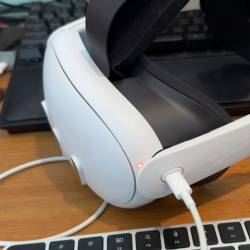
There are a few steps to the process and it involves enabling developer mode on the hardware then using ADB (Android Debug Bridge) commands to enable the necessary functionality, but it’s nothing the average curious hacker can’t handle. The directions are written out in the video’s description, along with a few handy links. (The video is embedded below just under the page break, but view it on YouTube to access the description and all the info in it.)
He also provides some excellent guidance on practical things like how to capture stable shots, editing the videos, and injecting the necessary metadata for optimal playback on different platforms, including hassle-free uploading to a service like YouTube. [Hugh] is no stranger to this kind of video and camera handling and really knows his stuff, and it’s great to see someone provide detailed instructions.
This kind of 3D video comes down to recording two different views, one for each eye. There’s another way to approach 3D video, however: light fields are also within reach of enterprising hackers, and while they need more hardware they yield far more compelling results.
Continue reading “Quest 3 VR Headset Can Capture 3D Video (Some Tampering Required)”



